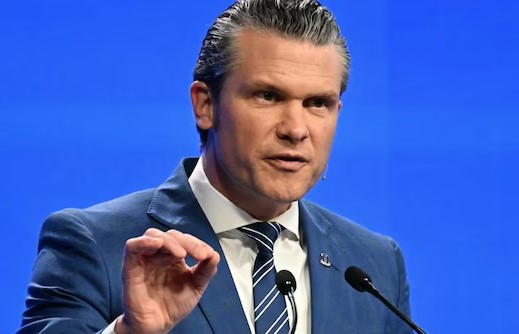The United States Department of Defense has raised serious concerns about China’s growing military actions. China is currently the US’s “pacing threat,” according to US Secretary of Defense Pete Hegseth.
China’s Military Moves Worry the Pentagon
This means that the Pentagon sees China as the country it must watch and prepare for the most. Hegseth made this statement while speaking to lawmakers in the US House of Representatives.
He said that China, under its communist leadership, is quickly building up its military power. Even more alarming, he said, is that China is not just practicing—it is preparing for a real war in the Indo-Pacific region. This encompasses the region surrounding Taiwan, which China asserts is its territory. The US does not recognize China’s claim and supports Taiwan’s right to decide its own future.
Hegseth said that China’s goal is not just to control Taiwan, but to dominate the entire Indo-Pacific region and eventually become a world leader in military and economic power. He warned that if China achieves this, it could hurt the US economy by limiting access to key global trade routes and slowing down America’s efforts to rebuild its manufacturing industries.
Trump-Era Strategy and Growing Chinese Drills
During the same meeting, Hegseth said the US must rely on “peace through strength,” a strategy followed by former President Donald Trump. This strategy believes that a powerful and ready military can prevent wars by making enemies think twice before attacking. Hegseth stressed that the US needs to rebuild its defense industry and create the world’s strongest and most advanced military force to protect its interests.
Beijing’s Influence Questioned as Solomon Islands Minister Ditches Pro-Taiwan Alliance
He also pointed out that China’s military—the People’s Liberation Army (PLA)—is not only increasing its forces but also conducting exercises that look a lot like invasion practices. These exercises are often carried out near Taiwan, raising fears that they might one day turn into a real attack.
During the session, General Dan Caine, the Chairman of the Joint Chiefs of Staff, also addressed. He claimed that Taiwan is coming under increasing military pressure from China. Compared to earlier times, the PLA’s operations are now larger, more frequent, and more intricate. These are not easy training exercises, Caine said. According to him, they are “practices for a forced unification” with Taiwan.
The commander of the US Indo-Pacific Command, Admiral Samuel Paparo, concurs. He has previously warned that China’s actions in the region show that it is getting ready for a conflict.
Taiwan’s Concerns and Response
The situation has also drawn strong attention in Taiwan. On the same day as Hegseth’s warning, Taiwan’s Minister of National Defense, Wellington Koo, spoke to lawmakers in Taipei. He said that Taiwan is closely watching every move made by the Chinese military. He confirmed that Beijing’s military exercises are becoming larger and more unpredictable.
Koo said that the Taiwanese military is focused on defending the country in case of war. At the same time, it is also working on how to handle “grey zone” threats. These are actions that do not involve direct attacks but are still meant to weaken or scare the other side. Examples of grey zone tactics include cyberattacks, spreading fake news, or flying warplanes close to another country’s borders.
Power Play Turns Toxic: U.S. Deploys F-16 Jets to Taiwan and Philippines, China Issues Stark Warning
Koo explained that Taiwan’s military is studying these new tactics and developing ways to measure how dangerous each one is. This helps them decide the right response each time such an event occurs.
In summary, top US and Taiwanese defense leaders are deeply worried about China’s military build-up. They believe that the Chinese government is not just preparing for defense but actively practicing for a possible attack on Taiwan. Both countries are increasing their efforts to be ready for any threat.

